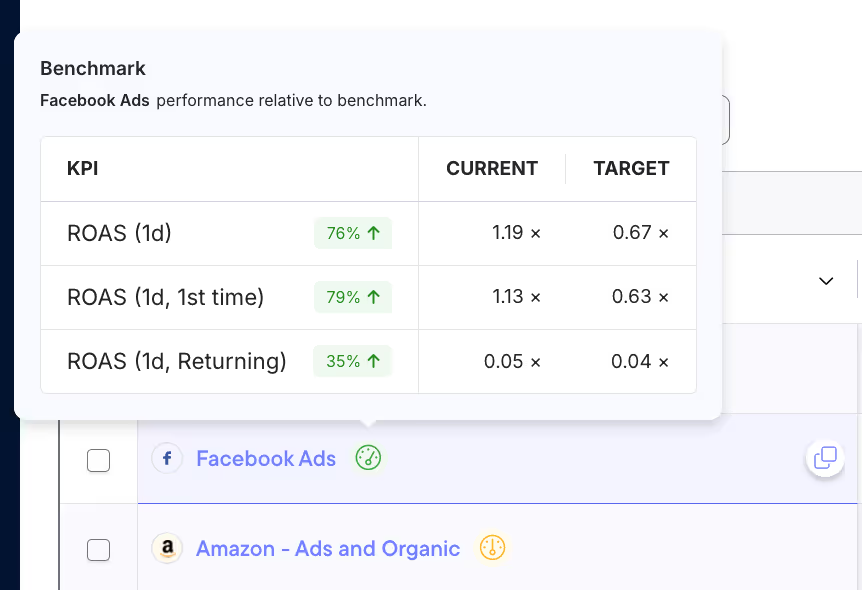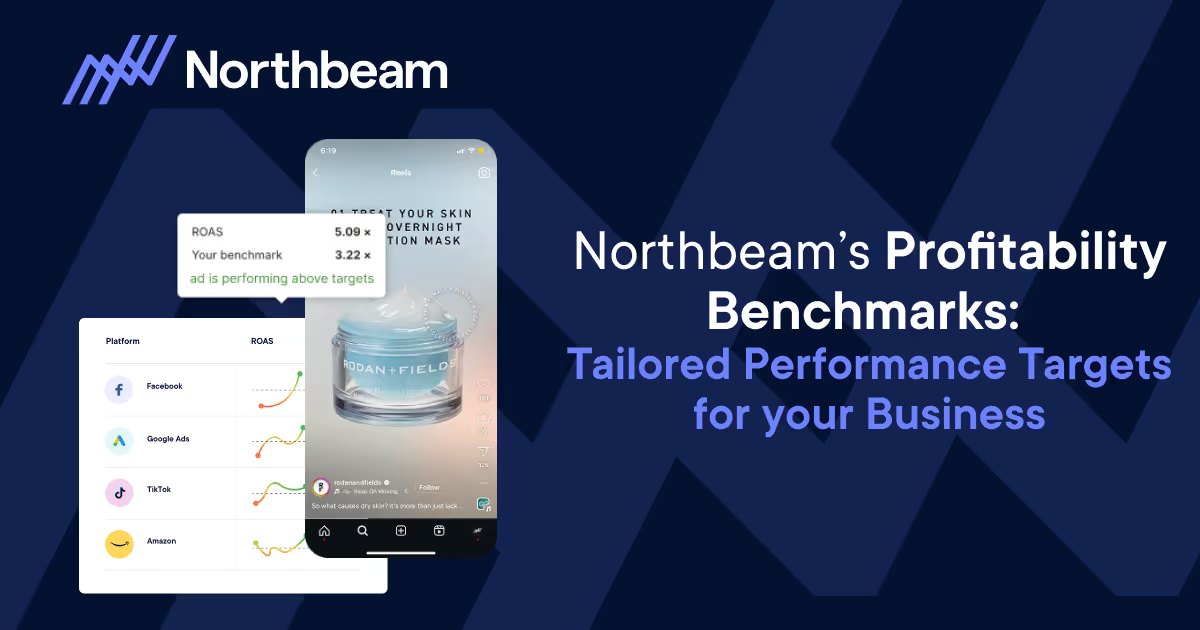In the ever-evolving landscape of digital marketing, understanding what defines a successful ad campaign is crucial for sustainable growth. Profitability Benchmarks is a tool within Northbeam designed to help you set personalized performance targets based on your unique business data.
Why Profitability Benchmarks?
Traditional benchmarking often relies on external industry data, which may not accurately reflect your business's unique dynamics. Profitability Benchmarks shifts the focus inward, allowing you to set personalized performance targets, enhance decision-making with real data, and simplify complex data into the metrics that matter.

By establishing performance targets for each of your campaigns, you can demystify what constitutes a “good” or “bad” ad campaign in the context of your specific business.
How does it work?
Profitability Benchmarks give brands the flexibility to define their own success metrics by analyzing past performance and filtering out misleading anomalies.
Here’s how it works:
- Select your baseline days: Choose historical data that best represents your typical performance; this ensures that benchmarks are grounded in real business outcomes rather than industry-wide assumptions.
- Adjust for profitability: Factor in COGS to create profitability-based benchmarks to ensure that your targets reflect actual margins, not just revenue.
- Manage outliers: Promotional periods, product launches, or unexpected downturns can distort performance data. You can remove these fluctuations so that your benchmark reflects normal business operations for a more accurate view of long-term performance trends.
- Consider incrementality: Not all sales are directly attributable to a single ad or campaign. You can adjust benchmarks to exclude non-incremental conversions, ensuring that your targets focus on true revenue impact.
- Compare and optimize: Once your benchmarks are set, you can track performance against your targets in real-time. This helps identify which campaigns are overperforming, which need adjustment, and where to allocate budget more effectively.
Why does it matter?
With Profitability Benchmarks, brands can move beyond vanity metrics and focus on what actually drives profitability. They can improve budget allocation, scaling the right campaigns and cutting inefficient spend with data-backed confidence. Finally, they can drive sustainable growth by setting realistic, performance-based goals that ensure long-term profitability.
With Profitability Benchmarks, success is no longer defined by generic industry data — it’s defined by you.
If you’re interested in gaining access to Profitability Benchmarks, get in touch with our team to learn more.









.avif)



.svg)
